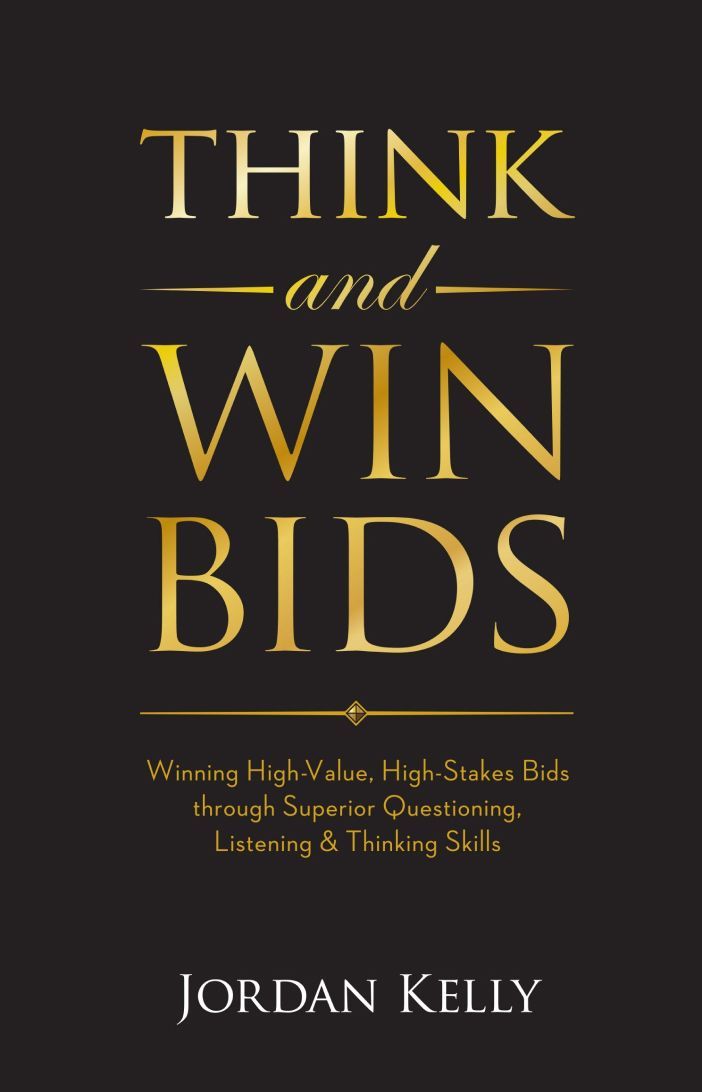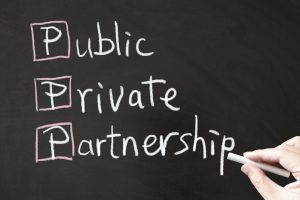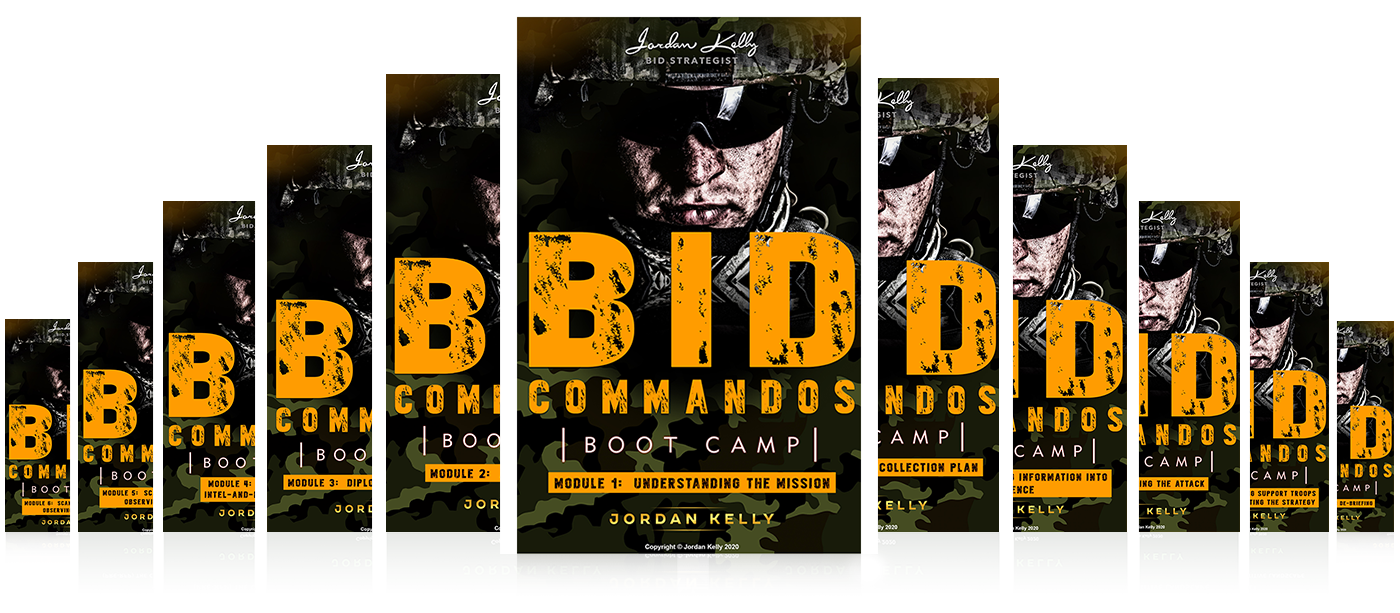Pursuits Academy
Attaining true mastery in bids, tenders, proposals
and all forms of new-business pursuit.
ACADEMY KNOWLEDGE BASE

Jordan Kelly is a
veteran operative in the arena of formal business-winning submission processes (i.e. bids, tenders and proposals) . . . along with the planning and execution of proactive, broader-scale pursuits.

By Jordan Kelly
•
September 13, 2025
‘Pitch’ – a buzz word borrowed from the advertising industry – is a term some of the “cooler types” in other industries like to throw around . It’s also close to my most despised term. Why? Ask any customer, client or professional tender evaluator if they like to be “pitched” to . . . and you’ll be treated to a range of impassioned responses with a clear central theme: Just like you, clients and procurement professionals don’t like to be “sold” (what they like, is to think they are making balanced, well-informed procurement decisions). They certainly don’t relish being forced to listen to a salesy, supplier-centric, “push” monologue (or to read the written equivalent). And that, of course, is exactly what a “pitch” is. Even the use of the word “pitch” is an expression of self-centred thinking. It’s an indication of the place its user is coming from: A short-term-focused, whatever-we-have-to-do-or-say-to-bag-this-deal mindset. (Which is bad enough in its own right, if you value successful incumbency and/or repeat business.) Most “bid strategy” workshops I’ve sat in on (i.e. not as the facilitator) are little more than pitch development sessions. The participants – and worse still, often also the facilitator or leader – bangs on about “win themes” and “silver bullets” . . . and other concepts that frequently, at root, are actually more about the bidder than the client. The Pitchfest Litmus Test Let me give you a litmus test to use, in a bid strategy workshop, that will hold up a mirror to the process and indicate to you whether you’re developing a genuinely client-centric bid strategy, or a self-centric pitchfest of “things you can say” in your proposal. Here it is: Has anybody made an utterance to the effect of, “coming up” with (some form of) a “value proposition” (which, in reality, is little different to a “win theme” or “silver bullet”)? Or, in fact, “coming up” with anything? What will ring the client’s bell most vigorously is not your “win theme”, “silver bullet”, “value proposition” or anything else you “come up with” to say. What will really capture them is your demonstration of a deep and detailed understanding of their world, their organisation and the circumstances surrounding their intended procurement . . . followed by your identification of their related challenges and priorities, and then the alignment of a success-critical competitive strength on your part. A long way from a “pitch”, isn’t it? A Mind Picture to Help You Avoid Temptation Let me implant a vision in your mind that should help you – as an individual of dignity – develop a healthy degree of “cringe factor” for the whole notion of a “pitch”. I once witnessed an advertising agency giving its pitch for a potential new account. (Admittedly, this was quite some years ago, before the proliferation of easy-to-use digital media technologies.) Three women in suits stood side by side in front of a small group of senior executives and marketing personnel from the prospective client organisation. Each held up a “storyboard”. Some “happy” music started playing. With over-exaggerated grins, the three women each started bopping up and down to a jingle on a ghetto blaster while wobbling their respective storyboards, Rolf Harris-style. And then came the truly unthinkable: They started singing. That should embarrass you, just reading it. Keep that picture in mind next time you suspect you may be entering into “pitch” territory – in your bid strategy workshops or even in your language or in your thinking.

By Jordan Kelly
•
April 17, 2025
Here are four prime no-no’s when giving shortlistee presentations: 1. Don’t use lots of unexplained technical jargon to make yourself sound smart. ( NB: The same advice applies to your written submissions.) 2. Don’t let everyone know how important you are. 3. Don’t recite your presentation from memory or sound as though you are. 4. Don’t cram your slides with numerous text bullet points in multiple fonts. Source: Chris Anderson’s ‘How to Give a Killer Presentation’, Harvard Business Review.

By Jordan Kelly
•
March 27, 2025
How do you slash the cost of bidding without bringing about a correspondent drop in submission quality? I’m about to present you with nine suggestions which, when implemented, will not only save you time and resources (read: budget) but will, in fact, streamline the process and produce a superior end product. Fair warning: Some are […]

By Jordan Kelly
•
March 2, 2025
Whilst the first and most immediately obvious step in improving poor articulation performance in a submission is to subject it to a rigorous editing process, there’s almost always a greater issue at play. That issue is the largely non-client-specific (at least, not convincingly specific) and generally “same, same” nature of the content . . . the supplier-focused “brochureware” that results from an unclear, uncertain or absent bid strategy. Or an insufficiently documented one. In almost every bidding enterprise I’ve worked with, writers have previously had to either rely on little more than workshop notes, together with existing generic content, to inform their response sections. For the most part, they’re forced to interpret and piece together in their own minds, the intended underpinning strategy and guiding themes supposedly resulting from planning sessions. In many cases, they’re faced with making up the content themselves without any guidance. It’s critical to recognise that producing a client-focused submission requires more than a simple emphasis on writing techniques and editing processes (e.g. flipping sentences around to commence with the client organisation’s name versus the bidder’s). If writers are given a comprehensive and user-friendly bid strategy blueprint to guide them, and along the way their outputs are nurtured by the appointed strategist within the group, their writing should, by default, adequately convey the bid strategy. And it should do so in a client-focused manner.
The 55 Most Over-Used & Abused Words in Sales Proposals
A list of 55 words and phrases to provide you with a quick-read overview of some words and terms that have become a little too fashionable in today’s business and sales proposals.

By Jordan Kelly
•
March 27, 2025
How do you slash the cost of bidding without bringing about a correspondent drop in submission quality? I’m about to present you with nine suggestions which, when implemented, will not only save you time and resources (read: budget) but will, in fact, streamline the process and produce a superior end product. Fair warning: Some are […]

By Jordan Kelly
•
March 19, 2025
One particularly common mistake I see made from the level of bid operations right through to senior management, is to confuse strategy with tactics. These are not interchangeable terms and they’re certainly not interchangeable concepts: Strategy informs tactics. Two different things. Two different functions. Two different processes. A basic, high-level definition of “strategy” might be: […]

By Jordan Kelly
•
March 2, 2025
Whilst the first and most immediately obvious step in improving poor articulation performance in a submission is to subject it to a rigorous editing process, there’s almost always a greater issue at play. That issue is the largely non-client-specific (at least, not convincingly specific) and generally “same, same” nature of the content . . . the supplier-focused “brochureware” that results from an unclear, uncertain or absent bid strategy. Or an insufficiently documented one. In almost every bidding enterprise I’ve worked with, writers have previously had to either rely on little more than workshop notes, together with existing generic content, to inform their response sections. For the most part, they’re forced to interpret and piece together in their own minds, the intended underpinning strategy and guiding themes supposedly resulting from planning sessions. In many cases, they’re faced with making up the content themselves without any guidance. It’s critical to recognise that producing a client-focused submission requires more than a simple emphasis on writing techniques and editing processes (e.g. flipping sentences around to commence with the client organisation’s name versus the bidder’s). If writers are given a comprehensive and user-friendly bid strategy blueprint to guide them, and along the way their outputs are nurtured by the appointed strategist within the group, their writing should, by default, adequately convey the bid strategy. And it should do so in a client-focused manner.

By Jordan Kelly
•
February 24, 2025
If – as pursuit leader or bid strategist – you haven’t checked off the following key preparatory measures before your bid writers put fingers to keyboard, you greatly risk falling into the standard default position i.e. section authors producing thinly-disguised "brochureware", and others producing what comes across as cut-and-pastes from a product or procedures manual. So ensure you can answer fully in the affirmative before you set your section authors loose on their tasks: Have you produced a comprehensive, high-readability, overarching strategy document? Have you produced writer’s guides – based on the above – for each major section or Schedule? Before finalising the above, have you shown these to several of the writers to ensure they are user-friendly from their perspective? Have you held a collective briefing session i.e. between the strategist, one or two other key participants in the strategy workshops, and the section authors i.e. to verbally explain the strategy and how it underpins or influences their sections? Have you returned to each section author, individually, following this initial collective briefing, to ensure they understand and can follow their respective writing guide? And that they have aligned the content of their writing guide with their section content plan? Does any section author feel he or she needs more supporting information that they need help to obtain? These are the key steps to ensuring bid content that reflects, and adheres to, a central, cohesive, underpinning strategy.
From the Library

Think and Win Bids
Winning High-Value, High-Stakes Bids through Superior Questioning, Listening and Thinking Skills.

By Jordan Kelly
•
March 2, 2025
Whilst the first and most immediately obvious step in improving poor articulation performance in a submission is to subject it to a rigorous editing process, there’s almost always a greater issue at play. That issue is the largely non-client-specific (at least, not convincingly specific) and generally “same, same” nature of the content . . . the supplier-focused “brochureware” that results from an unclear, uncertain or absent bid strategy. Or an insufficiently documented one. In almost every bidding enterprise I’ve worked with, writers have previously had to either rely on little more than workshop notes, together with existing generic content, to inform their response sections. For the most part, they’re forced to interpret and piece together in their own minds, the intended underpinning strategy and guiding themes supposedly resulting from planning sessions. In many cases, they’re faced with making up the content themselves without any guidance. It’s critical to recognise that producing a client-focused submission requires more than a simple emphasis on writing techniques and editing processes (e.g. flipping sentences around to commence with the client organisation’s name versus the bidder’s). If writers are given a comprehensive and user-friendly bid strategy blueprint to guide them, and along the way their outputs are nurtured by the appointed strategist within the group, their writing should, by default, adequately convey the bid strategy. And it should do so in a client-focused manner.

By Jordan Kelly
•
March 2, 2025
Have you ever had the demoralising experience of being engaged in a phone conversation with someone who suddenly starts shuffling papers, filing or (worse still) reading and responding to an unrelated email? If you were sufficiently forward as to protest and the other party sufficiently ignorant as to persist with his or her other activity, he or she would no doubt have given you the “I can multi-task” line. But I’ll wager it was obvious to you that, at best, your “multi-tasking” conversation partner was hearing only sporadic soundbytes of your end of the conversation. It’s a neurological fact that the brain can focus on only one matter at a time. It might flit between subjects, issues and conversations . . . but it can concentrate properly on only thing in any given moment. In his recent best-seller, ‘The Organized Mind’ , neuroscientist Daniel J. Levitin produces evidence to underscore how minimising the attention devoted to any one thing (the natural consequence of trying to spread one’s concentration amongst several things) dramatically decreases the quality of attention both to that and to everything else on that individual’s plate. Conversely, conceptual and critical thinking, along with insight and ingenuity, Levitin stresses, happen only when we screen out distractions and properly focus. Already, it’s pretty obvious how the nonsense practice of “multi-tasking” negatively impacts not only the quality of critical submissions, but every process that feeds into their production. As a bid strategist and coach, here are just two of the key processes that I regularly witness being adversely affected: Participants in strategy workshops insisting on reading and responding to emails and text messages . . . switching off to the thread of fast-moving, group conversations and thus forgo-ing their understanding of, and input into, the evolving bid strategy. Section authors and other writers interrupting their flow of writing inspiration to answer emails and their own incoming phone calls. (If professional authors feel the need to shut themselves away in order to place their full and uninterrupted focus on the piece they’re working on, why would someone who doesn’t write for a living feel they can produce a quality written output while “multi-tasking”?) Aligning with my cynicism over the concept of “multi-tasking” proficiency, Stanford University researchers have found that “multi-taskers” (a) have difficulty organising their thoughts and filtering out irrelevant information, and (b) are actually slower at them, with their switching from one task to another (versus those who stay focused on one activity until it is satisfactorily completed). Potentially, there’s also evidence that multi-tasking lowers one’s IQ. A University of London study found participants who multi-tasked during cognitive tasks experienced compromised IQ score declines similar to what might be expected had those individuals smoked marijuana or stayed up all night. Coming back to bidding. When you’re otherwise throwing everything at a must-win, high-stakes bid, why go at it with diffused mental energy? To do so argues with every claim you make – to yourself, to your bid team colleagues, and to the potential client – as to the importance of victory.

By Jordan Kelly
•
March 2, 2025
When you’re under the pump with a short submission timeframe, your best default strategy for getting a top-notch bid out the door in good time and with the least stress possible is to “go with the current” in terms of people’s natural talents. You can coach people in their areas of weakness to a reasonable degree, but rarely will they be great in those particular aspects of bid production. The fact is, people generally gravitate back to the aspects in which they naturally excel and endeavour to avoid those in which they don’t. And when a bid manager is under the pump, the cold, hard fact of the matter is that he or she simply doesn’t have the time to coach or cajole. Identify the Priority Skills Needed The first step is to accurately identify the priority skills required for each part of the submission and the process, giving careful consideration to which individuals possess these. It’s also smart to consider personality traits or work habits that stand to either propel or impede progress towards the finish line. Really think about each person and who (rather than what ) they are. ‘Day job’ position titles can be misleading in the context of a bid. Often, the strengths and weaknesses you’d assume of an individual in a particular role just don’t import across into a bid team environment in the way you’d expect them to. I’ll cite as a case study, a small, component operation of a larger organisation with which I had been working. One of the operation’s few "white collar" staff members (aside from the GM) was assigned as bid manager. It was a pressure cooker timeframe and, a few days after kick-off, the schedule was already floundering. In short, this assumedly "natural" bid manager appointment was a disastrous choice. As it happened, fate graciously stepped in and saw that individual suddenly pulled off onto another contract elsewhere. Because I was working with the team by remote control, there was little choice but for the Construction Manager to take over the bid management role. ‘Humble Hammer Swinger’ Saves the Day Fate dealt the bid a lucky hand that day. The previous appointee’s weakness was the Construction Manager’s strength. This "humble hammer swinger" (his own words) made a brilliant bid manager. He was organised, efficient, exercised total diligence in keeping his own commitments, and had an affable but effective way of holding others to their's. His humility came in handy, too: If he could see anything going off the rails, he was quick to pick up the phone for advice. The fact that he couldn’t string two coherent sentences together on paper turned out to be inconsequential. When the now-former bid manager returned to the team, he gravitated directly towards - and excelled at – the bid’s writing tasks, taking on those that had, in fact, been assigned to the Construction Manager. So, by complete accident, we ended up with a highly functional bid team and a top-notch bid out the door in what, for that particular operation, was apparently record time. To re-emphasise the moral of the story: When time is unavoidably tight, ensure the highest quality and the least stress by getting to know your "human resources" and letting each wear the cap that most comfortably fits him or her.

By Jordan Kelly
•
March 2, 2025
This article is a direct follow-on from, ‘The 11 Stages of Competent & Comprehensive Pre-Probity Bid Management’. Those stages that should be conducted post -release of the RFP are: Stage One : Hold a session to ‘reality check’ and finalise the Strategy Document against Expression of Interest or Request for Proposal content and requirements. It is critical that all participants undertake – prior to this session – their own personal, detailed reading of the market call documentation. Without this prior study of the document, the first few hours of the session will be soaked up by this exercise or - if the session proceeds without participants having read the EOI or RFP - the only contributors of value to the session will be those whom have read it. The purpose of the session is to complete and “reality check” the pre-probity-formulated interim strategy document against the client organisation’s actual information and requirements. Where significant additions or departures are identified, a revised Strategy Document must be issued. (It can reasonably be assumed that, most times, a revised Strategy Document will be necessary.) Stage Two : Submit the Bid Strategy Document to senior management for approval. This is a critical step in ensuring that the underlying strategy and the content of a proposed end submission is not rejected, by senior executives, at the eleventh hour. Stage Three : Confirm or modify brief to designers based on above. With reference to Stage 11: Formulate brief for designers (see ‘The 11 Stages of Competent & Comprehensive Pre-Probity Bid Management '', this earlier “heads up” preparatory brief should now be revised/refined/supplemented and formalised). Stage Four : The Strategy Document should be issued to authors, and a writing coaching session should be held for those authors (including subject matter experts) contributing to each submission section. A bid-specific coaching session is a valuable exercise, to identify the degree of writing competence possessed by each contributor and apportion any assistance resources early and appropriately. Stage Five : Early-Stage Review. The Bid Strategist, along with whomever the Bid Manager has appointed as the editor of the end submission, should review each contributor’s first few paragraphs / first page, to determine whether he or she is “on the right track” with his or her copy. This allows for the provision of direction and any material input in the early stages, as opposed to the latter stages (which creates editing and re-writing bottlenecks dangerously close to the submission deadline). Stage Six : Strategic diagrammatic support identified and briefs given. Opportunities to support/supplement the written content with diagrammatic and other visual content should be identified, and the relevant subject matter experts pulled in to brief the design team (to whom preliminary relevant copy sections should be provided). Stage Seven : Subsequent series of reviews. Upload of first and subsequent drafts (allow for at least five ) by the date identified jointly by the Bid Strategist, Bid Manager and editor. The number and timeframes for these reviews should be realistic to accommodate the number of Bid Manager/author exchanges that will be necessary to bring copy to Final. Take into consideration that: a) Where contributors are not professional writers, considerable redrafting and/or editing will likely be necessary. b) Where professional writers are producing the content, these writers are unlikely to also be subject matter experts, and revisions to the substance and detail of their copy will likely be necessary when reviewed by the topic experts. c) Diagrammatic and other visual supplementation should be submitted back to the subject matter experts who briefed the design team. As above, this must be done with plenty of time to allow for several rounds of correctional iterations. Stage Eight : The Bid Manager should make a final review of content prior to tabling to the Pursuit Leader and Bid Strategist. The Bid Manager must ensure the draft submission is technologically sound, as well as comprehensive, in terms of strategy. If there are significant shortfalls in these areas, the Bid Manager should return the copy to the author for correction and/or completion. It should then be submitted back to the Bid Manager by the author. After the Bid Manager is satisfied with the soundness and comprehensiveness of the draft in question, the Pursuit Leader and Bid Strategist should be brought back into the review process. For quality control and consistency purposes, all copy (e.g. case studies, CVs, appendices) – within reason – should be reviewed by the Pursuit Leader and the Bid Strategist. Stage Nine : Production of Executive Summary (i.e. towards end of above process, when a more detailed and authoritative picture of the content is known). Writing a submission’s Executive Summary before the production of the bulk of its content, is illogical. An Executive Summary should be precisely that i.e. a Summary . Unfortunately, many (if not, most) bidders treat this as either a covering letter or a preamble sales piece. Stage Ten : Graphic production and checking. Review of the various iterations of the graphic design should follow the same basic procedural format as for the review of the written content. Stage Eleven : Senior management review/comment. The bid strategy document should be provided to any reviewing senior management who were not privy to it in the earlier stages, and in plenty of time for each to have read and absorbed it before receiving the proposed end submission for approval. Meantime, as a refresher, a summarised, key point version of the strategy document should be provided to those whom have already been provided with the fuller version. Stage Twelve : Final adjustment and editing to professionally blend in management additions and alterations. Do not underestimate the potential volume of revisions, additions and subtractions senior management has a propensity to request – especially if the bid involves joint venture partners and, thus, executives from several organisations (who may not be in agreement with each other on matters of detail). Stage Thirteen : Insertion of copy into page design framework. The Pursuit Leader, Bid Strategist and Bid Manager overview the intended final design production, quality-control-checking at the very finest level of detail, before delivery to prospective client organisation. See: ‘The 11 Stages of Competent & Comprehensive Pre-Probity Bid Management’ .

By Jordan Kelly
•
March 2, 2025
Whilst the first and most immediately obvious step in improving poor articulation performance in a submission is to subject it to a rigorous editing process, there’s almost always a greater issue at play. That issue is the largely non-client-specific (at least, not convincingly specific) and generally “same, same” nature of the content . . . the supplier-focused “brochureware” that results from an unclear, uncertain or absent bid strategy. Or an insufficiently documented one. In almost every bidding enterprise I’ve worked with, writers have previously had to either rely on little more than workshop notes, together with existing generic content, to inform their response sections. For the most part, they’re forced to interpret and piece together in their own minds, the intended underpinning strategy and guiding themes supposedly resulting from planning sessions. In many cases, they’re faced with making up the content themselves without any guidance. It’s critical to recognise that producing a client-focused submission requires more than a simple emphasis on writing techniques and editing processes (e.g. flipping sentences around to commence with the client organisation’s name versus the bidder’s). If writers are given a comprehensive and user-friendly bid strategy blueprint to guide them, and along the way their outputs are nurtured by the appointed strategist within the group, their writing should, by default, adequately convey the bid strategy. And it should do so in a client-focused manner.

By Jordan Kelly
•
February 24, 2025
In Part One, I wrote about the importance of having a clear and documented bid strategy, of focusing on benefits, of answering the client’s questions, of substantiating your claims, and last but not least – of avoiding consultant-style parroting. These considerations all, in one way or another, relate back to effectiveness in the strategy planning […]

By Jordan Kelly
•
February 23, 2025
The tone or writing style of a bid need not be 100 percent uniform across all sections of the submission, but an editor should ensure against a mish-mash of different, non-complementary styles. A bid with a “salesy” Executive Summary or “front end”, and a “back end” that ranges widely from misplaced “brochureware” to dry academia, gives the impression of a disorganised vendor or bidder. Depending on the degree of disparity, it could even convey the impression that the various departments within the bidding enterprise are not on the same page. In answer to the question, “What’s the best style of writing to employ in a bid?” , it would be simple to say, “That which comes naturally to the writer.” Unfortunately, it would also be simplistic. The problem is, sometimes (often, in fact), a stilted, convoluted academic style is the section contributor’s default writing style. A partial answer to this – and one which avoids this pot pourri of styles ending up on the editor’s desk in the first place – is to coach all section authors in the use of the active voice in their writing.

By Jordan Kelly
•
February 22, 2025
One of the most fundamental mistakes bidders make when answering a call for Expressions of Interest or Requests for Proposal, is submitting a response that’s full of unsubstantiated claims (as website copy and general marketing materials commonly are). Too often, a statement is made in an EOI or RFP response that offers no substantiation, no demonstration of its accuracy. It appears the evaluation committee is simply expected to accept the claim at face value. Yet the evaluators would not be doing their job if they do . . . and you, as bidder, haven’t done “your” job if you expect them to. Further, how can an evaluator award you selection criteria-related points when you answer a question with an empty, unproven claim? Respondents and their writers should ask these questions as they plan and write their answers: What is the proof that this is true / fact? Offer adequate and genuine substantiation – whether of a “third party” nature or by providing some form of provable quantification. Table a statistic, for example, and state the source (which should be a reputable body recognised either by your industry, their industry, or the business sector at large). What is the credibility of this information? Many bidders include lightly edited, thinly-disguised versions of the same material they include in their marketing material or on their websites. The credibility of this information is generally nil, since it is based on opinion-based claims the bidder is making about its own service or product. To be authoritative, you must be able to show that any opinion is, in some form, supported by a credible third party e.g. by accreditation. Why is it relevant / critical to the client / customer organisation? Don’t just state facts or table data and leave it to the evaluation committee to determine their relevance. Explain why, in the context of this bid, you consider that fact or datum important. In that way, you strengthen the support those inclusions loan to your proposition. If, on the other hand, you neglect to do this, you will have potentially wasted that opportunity. Worse still, the evaluator may misinterpret the connection you intended him or her to make. With regard to the answer generated by the above question, what is the proof point of this high-relevance criticality? A savvy bidder will offer a double layer of substantiation. First, it will offer proof of a claim, and/or demonstrate that the claim is proven or provable. Then, after drawing the relevance of that information to the client organisation’s specific needs or challenges, the bidder will go on to demonstrate and/or quantify the benefits that will result from the evaluator making a decision in the bidder’s favour, based on this information. In summary, table proof that your claim is true (not just your opinion); provide some authoritative indicator of third-party concurrence; make it relevant to the client and, in turn, prove this relevance. Finally, if possible, quantify the benefits to be gained by taking the action that your claim suggests should be taken.

By Jordan Kelly
•
April 16, 2025
If you’re a senior executive responsible for setting – and overseeing the attainment of – your enterprise’s corporate growth goals, I have a question for you: How informed are you on the individual contracts that comprise the overall total of your organisation’s business-under-pursuit? How certain are you that the priorities underpinning the prioritisation of current […]

By Jordan Kelly
•
March 27, 2025
How do you slash the cost of bidding without bringing about a correspondent drop in submission quality? I’m about to present you with nine suggestions which, when implemented, will not only save you time and resources (read: budget) but will, in fact, streamline the process and produce a superior end product. Fair warning: Some are […]

By Jordan Kelly
•
January 7, 2025
‘What we’re trying to buy is new and innovative thinking – not our own thinking recycled back to us from the other side of the table.’ That was the strong message from Treasury New Zealand’s Head of PPP Program Fiona Mules, as she departed the position for a new phase as an independent, advising infrastructure […]

By Jordan Kelly
•
October 19, 2021
Some time ago, I wrote an article about the fact that, as I saw it, engineers have been done a grave disservice by consultants who intimate they ‘can’t sell’. That article has been published in numerous different professional journals and other publications, and continues to prompt feedback . . . and I’ve yet to receive […]

By Jordan Kelly
•
April 17, 2025
Here are four prime no-no’s when giving shortlistee presentations: 1. Don’t use lots of unexplained technical jargon to make yourself sound smart. ( NB: The same advice applies to your written submissions.) 2. Don’t let everyone know how important you are. 3. Don’t recite your presentation from memory or sound as though you are. 4. Don’t cram your slides with numerous text bullet points in multiple fonts. Source: Chris Anderson’s ‘How to Give a Killer Presentation’, Harvard Business Review.

By Jordan Kelly
•
April 16, 2025
If you’re a senior executive responsible for setting – and overseeing the attainment of – your enterprise’s corporate growth goals, I have a question for you: How informed are you on the individual contracts that comprise the overall total of your organisation’s business-under-pursuit? How certain are you that the priorities underpinning the prioritisation of current […]

By Jordan Kelly
•
March 27, 2025
How do you slash the cost of bidding without bringing about a correspondent drop in submission quality? I’m about to present you with nine suggestions which, when implemented, will not only save you time and resources (read: budget) but will, in fact, streamline the process and produce a superior end product. Fair warning: Some are […]

By Jordan Kelly
•
March 2, 2025
Whilst the first and most immediately obvious step in improving poor articulation performance in a submission is to subject it to a rigorous editing process, there’s almost always a greater issue at play. That issue is the largely non-client-specific (at least, not convincingly specific) and generally “same, same” nature of the content . . . the supplier-focused “brochureware” that results from an unclear, uncertain or absent bid strategy. Or an insufficiently documented one. In almost every bidding enterprise I’ve worked with, writers have previously had to either rely on little more than workshop notes, together with existing generic content, to inform their response sections. For the most part, they’re forced to interpret and piece together in their own minds, the intended underpinning strategy and guiding themes supposedly resulting from planning sessions. In many cases, they’re faced with making up the content themselves without any guidance. It’s critical to recognise that producing a client-focused submission requires more than a simple emphasis on writing techniques and editing processes (e.g. flipping sentences around to commence with the client organisation’s name versus the bidder’s). If writers are given a comprehensive and user-friendly bid strategy blueprint to guide them, and along the way their outputs are nurtured by the appointed strategist within the group, their writing should, by default, adequately convey the bid strategy. And it should do so in a client-focused manner.



